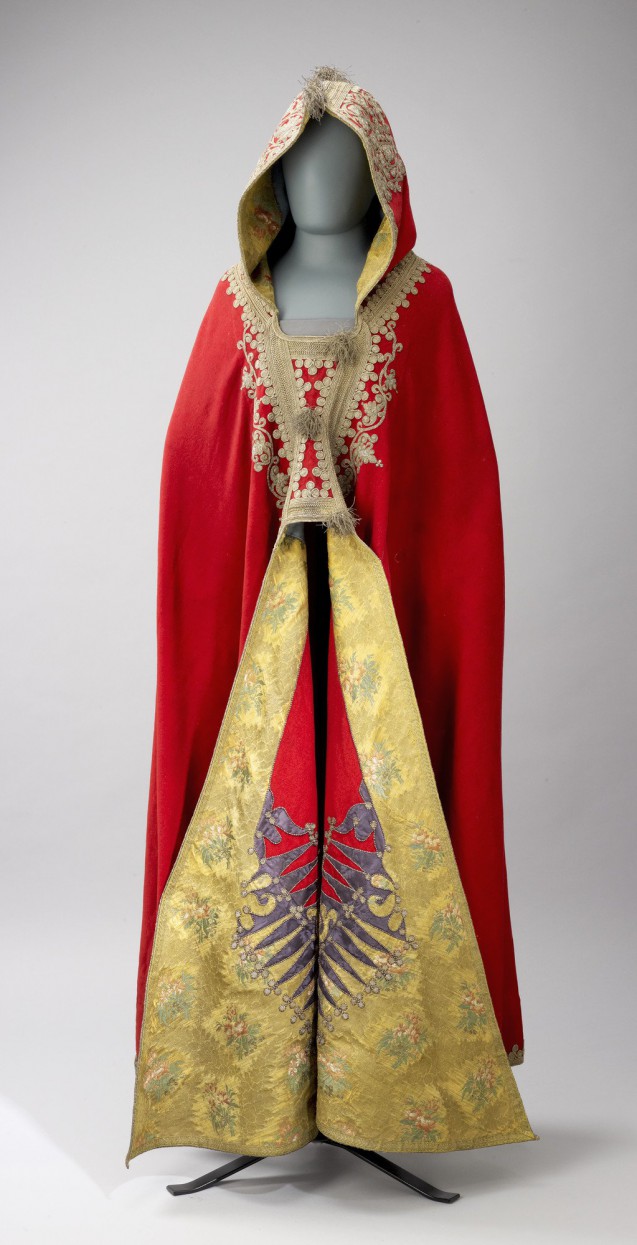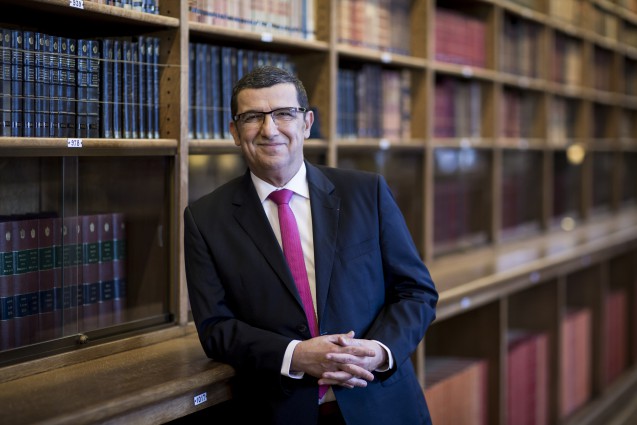Firstly, let it be said that the object appears in the Royal collections, under the number RCIN 61156, and is clearly listed as having been taken at Waterloo by the Prussians and then given by Marshal Blücher to the Prince Regent, future George IV. This is all the proof there is. As a result, whenever this traditional Berber cape is mentioned (described as being “probably” made in France between 1797 and 1805), they say it belonged to the Emperor, and that he took it with him in his luggage to the Belgian countryside… the consequences of which every schoolboy knows. But we really ought to add words to show that this is a hypothesis: in other words, we should say that it is thought to have been Napoleon’s or that we have always believed it to have been Napoleon’s.
Far be it from me to question the competence, the know-how, in a word, the expertise of the curators of the Royal Collection. But in this case, I am not entirely certain that a serious study has ever been made of the burnous. I therefore allow myself to question, until proven otherwise, the claim that this item was taken at Waterloo, and I would furthermore like to propose the hypothesis that Napoleon never owned this type of garment.
On the second point, let us not forget that an inventory of all the clothing, linen, sheets and even the handkerchiefs used by the Emperor was kept with extreme precision, and these items were all verified and stamped by his Imperial Household. My friend and colleague, Pierre Branda, has shown in his reference book on this institution (Les Hommes de Napoléon, La Maison de l’Empereur, Fayard Editions) that Napoleon himself attached great importance to such matters and frequently devoted time to going over his inventories. What we know about these inventories allows us to affirm today: burnous, you have to be joking #1!

The British curators say that inside the burnous there is an “N” is embroidered in gold thread. If this insignia is authentic (which experts on imperial fabric could probably attest), then it could possibly be a gift from North Africa, on the occasion of some contact with the King of Morocco, the beys of Tunis, Algiers or Tripoli or others. This would explain its absence from the inventories of linen and clothing. But, in this instance, it is difficult to imagine Napoleon’s valet Marchand including this sumptuous and cumbersome fabric in his master’s luggage; it would have been quite useless in this context. Indeed, what would have been the use of this burnous (which didn’t even come from Egypt) in the event of the taking of Brussels?
As for the hypothesis of a confiscation from the Emperor’s carriage or luggage at Waterloo, we can be more categorical. On the occasion of a major exhibition organised in 2012 at the Musée de la Légion d’Honneur in Paris, a small battalion of researchers examined the “booty” recovered by the Prussians. Their research was published in book, La Berline de Napoléon. Le mystère du butin de Waterloo (Albin Michel).
To summarise, it appears that there was no burnous in the carriage. Neither Marchand nor Ali mentioned it in their Memoirs, nor the Prussians. Not a single period document describes such a “cape” that would undoubtedly have caught the attention of the Prussian officers who presided over the looting. The only mention that might suggest this is in a letter from Blücher to his wife who tells her that, among other things (including the hat on display today at the Museum of German History in Berlin), a “richly embroidered ceremonial coat” was seized. No further details are given and the famous coat was never again mentioned in any Blücher documentation. If it existed, it may well be an “imperial” coat, such as the Emperor often took with him on his travels (as well as his decorations, seized at Waterloo) in case he had to wear it for a non-military ceremony. As for the objects that Blücher allegedly gave to the Prince Regent, it seems that there were none, the elements recovered by the British (essentially the Dormeuse carriage which was exhibited for a long time at Madame Tussaud’s) were offered by the officer von Zeller who had seized them personally after the battle. Here again, the historical elements allow us to conclude: burnous, you have to be joking #2!
So, where did this exotic article of clothing come from? Apart from the fact that it was probably not part of Napoleon’s luggage looted at Waterloo, we do not know anything about it. Was it taken later by Blücher’s men, during the occupation of Paris? Was it attributed to Napoleon in a fanciful way, by Blücher’s aide-de-camp, von Nostitz, who mentioned it at the time of Wellington’s funeral in 1852, in order to add spice to his Memoirs (generally rather unreliable)? Did it come from a museum of “curiosities” such as the one operated by William Bullock in Picadilly London under the name of the “Egyptian Hall”, whose owner sold the collection to settle his debts, including by dispensing fake (or “not quite authentic”) items left and right and centre? It is not possible to decide without a more in-depth study being undertaken by the curators of the Royal collections, not only of their documentation but also on the origin of the fabrics and embroideries, including a precise dating and a hypothesis of their manufacture.
Of course, we would be delighted to receive any clarification (supported by documentation) that our readers may wish to send us.
historian, director of the Fondation Napoléon / September 2018
(translation RY)
Articles and publications:
Pierre Branda, Les Hommes de Napoléon. La Maison de l’Empereur, Fayard, 2011
La Berline de Napoléon. Le mystère du butin de Waterloo, Albin Michel, 2012
“Mais que fait le burnous de Napoléon Ier chez la reine d’Angleterre”, Paris Match, 31 mars 2018
The presentation of the Burnous on the website of the Royal Collection Trust (in English)


